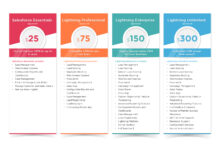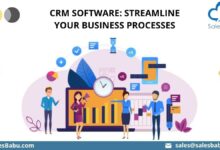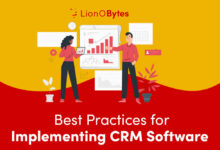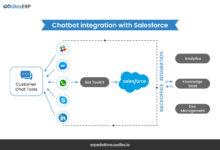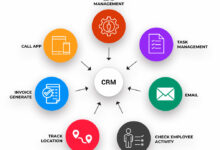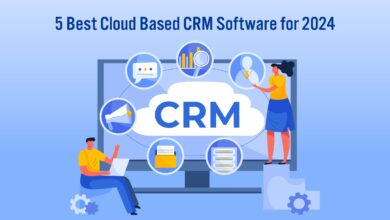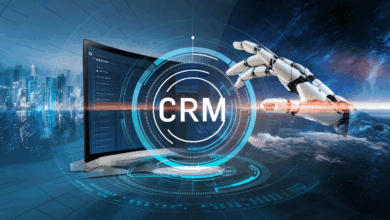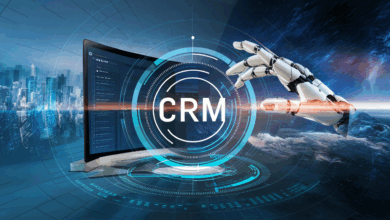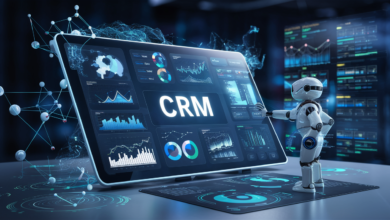CRM System Pricing: Factors, Models, And Strategies
CRM system pricing is a crucial aspect of any business operation, influencing decisions and strategies. Dive into the complexities of pricing models, factors affecting costs, and effective negotiation strategies.
Overview of CRM System Pricing
When considering CRM system pricing, there are various factors that can influence the cost of implementation and usage. These factors can include the size of the business, the number of users, the level of customization required, the deployment method (cloud-based or on-premise), and additional features or integrations.
Types of Pricing Models
- Per User: Many CRM providers offer a per user pricing model, where businesses pay a set fee for each user accessing the system. This can be a cost-effective option for small to medium-sized businesses.
- Flat-Rate: Some CRM software providers offer a flat-rate pricing model, where businesses pay a fixed monthly or annual fee regardless of the number of users. This can be beneficial for companies with a large number of users or fluctuating user numbers.
- Usage-Based: In this model, businesses are charged based on the usage of the CRM system, such as the number of contacts managed, emails sent, or storage used. This can be a flexible option for businesses with varying needs.
Pricing Strategies of Popular CRM Providers
- Salesforce: Salesforce offers a tiered pricing structure based on the features and functionalities included in each plan. They also provide add-ons and integrations for an additional cost, allowing businesses to customize their CRM solution according to their needs.
- HubSpot: HubSpot offers a freemium model, providing basic CRM features for free with the option to upgrade to paid plans for advanced features like marketing automation and sales acceleration tools.
- Zoho CRM: Zoho CRM provides a straightforward pricing model with different editions catering to the needs of small businesses, mid-sized companies, and enterprises. They offer a wide range of features at competitive prices.
Types of Pricing Models
When it comes to CRM system pricing, there are several models that companies commonly use to offer their services. Each model has its own advantages and disadvantages, catering to different business needs and preferences.
Subscription-Based Pricing Model
In a subscription-based pricing model, customers pay a recurring fee at regular intervals, usually monthly or annually, to access the CRM system. This model is popular among businesses as it provides predictable costs and allows for budget planning. It also often includes updates and customer support in the package, ensuring that users have access to the latest features and assistance.
Pay-Per-User Pricing Model
The pay-per-user pricing model charges customers based on the number of users who will be using the CRM system. While this model can be cost-effective for small businesses with a limited number of employees, it can become expensive as the organization grows. The advantage of this model is that companies only pay for what they use, but it may not be scalable for larger enterprises.
Usage-Based Pricing Model
The usage-based pricing model charges customers based on the amount of resources or features they use in the CRM system. This model is beneficial for businesses that have fluctuating usage patterns or seasonal demands. It allows companies to scale their usage up or down according to their needs, providing flexibility and cost-effectiveness. However, customers need to closely monitor their usage to avoid unexpected charges.
Factors Affecting CRM System Pricing
When considering the pricing of CRM systems, several key factors come into play that can impact the overall cost of implementation. These factors include the size of the business, the level of customization required, and the extent of integration with other systems.
Impact of Business Size
- The size of a business is a major determinant of CRM system pricing. Larger enterprises with complex operations and a higher volume of customer data may require more advanced features and functionalities, leading to a higher cost of implementation.
- Smaller businesses, on the other hand, may opt for more basic CRM solutions that are cost-effective and cater to their specific needs without the need for extensive customization.
- Mid-sized businesses fall somewhere in between, often requiring a balance between advanced features and affordability.
Role of Customization and Integration
- Customization plays a significant role in determining CRM system pricing. Businesses that require tailored solutions to meet their unique requirements will incur higher costs compared to those implementing off-the-shelf CRM software.
- Integration with existing systems, such as ERP or marketing automation platforms, can also impact pricing. Seamless integration ensures a smooth flow of data across various departments, enhancing overall efficiency but may add to the overall cost.
- Businesses must carefully evaluate their customization and integration needs to strike a balance between functionality and cost-effectiveness when selecting a CRM system.
Hidden Costs in CRM System Pricing
When evaluating CRM system pricing, it is crucial to consider not only the initial quote but also the hidden costs that may arise throughout the implementation process and beyond. These hidden costs can significantly impact the overall expenses and should not be overlooked by customers.
Additional Fees Associated with CRM Implementation
During the implementation of a CRM system, customers often encounter additional fees that were not initially included in the pricing quote. These fees can vary depending on the vendor and specific requirements of the organization. Some common examples of additional fees include:
- Customization fees for tailoring the CRM system to fit the organization’s unique needs.
- Data migration fees for transferring existing data into the new CRM system.
- Training fees for educating employees on how to use the CRM effectively.
- Integration fees for connecting the CRM system with other existing software or systems.
Importance of Considering Long-Term Costs
While the initial pricing quote for a CRM system may seem reasonable, it is essential to consider the long-term costs associated with maintenance, upgrades, and ongoing support. These long-term costs can add up over time and significantly impact the total cost of ownership of the CRM system. It is crucial for customers to evaluate not only the upfront costs but also the expenses they may incur in the future to ensure they are making a sound investment.
Pricing Strategies for Small Businesses
In today’s competitive market, small businesses need cost-effective CRM solutions to streamline their operations and enhance customer relationships. Here are some strategies to help small businesses make the most out of their CRM investments.
Cost-Effective CRM Solutions
When looking for CRM solutions, small businesses should consider cloud-based options that offer affordable monthly subscriptions. Platforms like Zoho CRM, HubSpot, or Insightly provide robust features at a fraction of the cost of traditional CRM systems.
Scalability Options
Small businesses should choose CRM systems that offer scalability options to accommodate their growing needs. Look for solutions that allow you to upgrade or downgrade your subscription based on your business requirements. This flexibility ensures that you only pay for what you need.
Tips for Budget-Conscious Businesses
- Start with a free trial: Many CRM providers offer free trials, allowing you to test the platform before committing to a paid plan.
- Focus on essential features: Identify the key features that your business needs and opt for a CRM system that offers those functionalities without unnecessary add-ons.
- Consider open-source options: For extremely budget-conscious businesses, open-source CRM solutions like SuiteCRM or Vtiger CRM provide customizable platforms without the hefty price tag.
- Negotiate pricing: Don’t be afraid to negotiate with CRM providers for discounts or custom pricing plans tailored to your budget constraints.
Enterprise-Level CRM System Pricing
Enterprise-level CRM systems are designed to cater to the complex needs of large organizations, offering a wide range of features and functionalities that justify their higher pricing compared to CRM systems for small businesses.
Features and Functionalities of Enterprise-Level CRM Systems
- Advanced customization options to tailor the CRM system to specific business processes and requirements.
- Scalability to accommodate a large number of users and vast amounts of data.
- Integration capabilities with other enterprise software solutions such as ERP systems.
- Robust security features to protect sensitive customer data.
- Advanced analytics and reporting tools for in-depth insights into customer behavior and trends.
Comparison of Pricing Structures
Enterprise-level CRM systems typically follow a subscription-based pricing model, where the cost is based on the number of users and the level of customization required. In contrast, CRM systems for small businesses often have a flat-rate pricing structure with limited features and functionalities.
Customization Options for Enterprise Clients
- Enterprise clients have the option to customize the CRM system according to their specific needs, which can include integrations with existing systems, unique workflows, and specialized reporting requirements.
- Customization can impact pricing significantly, as the development and implementation of tailored solutions require additional resources and expertise.
Negotiating CRM System Pricing
In the process of selecting a CRM system for your business, negotiating pricing with vendors can play a crucial role in getting the best deal possible. Here are some strategies to help you negotiate better pricing deals with CRM vendors.
Understanding Contract Terms and Conditions
Before finalizing any pricing agreements with CRM vendors, it is essential to thoroughly understand the contract terms and conditions. Pay close attention to details such as payment schedules, renewal terms, and any hidden fees that may impact the overall cost of the CRM system.
- Review the contract carefully to ensure that you are aware of all the terms and conditions.
- Seek clarification on any points that are unclear or ambiguous.
- Negotiate any unfavorable terms to align with your business needs and budget.
Leveraging Competition Among CRM Vendors
One effective strategy to secure favorable pricing for your CRM system is to leverage competition among CRM vendors. By creating a competitive environment, you may be able to negotiate better deals and discounts.
- Request quotes from multiple CRM vendors to compare pricing and features.
- Highlight competing offers to each vendor to encourage them to provide better pricing.
- Negotiate based on the best offers you receive to secure the most cost-effective solution for your business.
Cost-Benefit Analysis of CRM System Pricing
In evaluating CRM system pricing, conducting a cost-benefit analysis is crucial to determine the value proposition of investing in such a system. This analysis involves weighing the costs of implementing and maintaining the CRM system against the benefits it can bring to the organization.
Framework for Assessing ROI of Implementing a CRM System
Implementing a CRM system can lead to various tangible and intangible benefits for a business. To assess the return on investment (ROI) of implementing a CRM system, consider the following framework:
- Calculate the initial cost of acquiring the CRM system, including software licensing, implementation, and training expenses.
- Estimate the ongoing costs of maintaining the CRM system, such as subscription fees, upgrades, and support services.
- Identify the potential benefits of the CRM system, such as increased sales, improved customer satisfaction, streamlined processes, and enhanced data analytics.
- Quantify the projected monetary gains from implementing the CRM system, taking into account both short-term and long-term impacts.
- Compare the total costs with the expected benefits to determine the ROI of implementing the CRM system.
Measuring Intangible Benefits of CRM Systems
Measuring the intangible benefits of CRM systems can be challenging but essential in assessing their value in relation to pricing. Intangible benefits may include:
- Enhanced customer loyalty and retention
- Improved brand reputation and customer perception
- Increased employee productivity and efficiency
- Better decision-making based on data-driven insights
To measure these intangible benefits, consider conducting surveys, collecting feedback from stakeholders, monitoring key performance indicators (KPIs), and analyzing qualitative data to gauge the impact of the CRM system on various aspects of the business.
Pricing Transparency in CRM Systems
The concept of pricing transparency in CRM systems is crucial for both vendors and customers. It involves the clear and open communication of pricing structures, ensuring that customers understand what they are paying for and vendors are upfront about their costs. This transparency helps build trust and credibility in the vendor-customer relationship, ultimately leading to better decision-making and long-term partnerships.
Importance of Pricing Transparency
Having transparent pricing models in CRM systems is essential as it allows customers to make informed decisions based on their budget and needs. It eliminates any hidden costs or surprises, fostering trust and confidence in the vendor. By being upfront about pricing, vendors can showcase their integrity and commitment to customer satisfaction.
Building Trust with Customers
- Transparent pricing builds trust by showing customers that there are no hidden agendas or additional charges.
- Customers feel more secure in their decision-making process when they have a clear understanding of the costs involved.
- Vendors who practice pricing transparency are perceived as reliable and honest, leading to stronger customer relationships.
CRM Providers with Transparent Pricing
One example of a CRM provider known for its transparent pricing practices is HubSpot. They clearly outline their pricing tiers and features on their website, making it easy for customers to compare and choose the best option for their business.
Another example is Zoho CRM, which offers straightforward pricing plans with no hidden fees, allowing customers to budget effectively and make informed decisions.
Customization Options and Pricing
Customization plays a crucial role in determining the pricing of CRM systems. The level of customization required by a business can significantly impact the overall cost of implementing a CRM solution. Finding the right balance between customization options and affordability is key to ensuring that the CRM system meets the specific needs of the organization without exceeding budget constraints.
Impact of Customization on Pricing
Customization features in CRM systems can include tailored workflows, specialized reporting tools, integration with other software applications, unique data fields, and personalized user interfaces. The more extensive and complex the customization requirements, the higher the cost of implementation and ongoing maintenance. Businesses must carefully assess their needs and prioritize customization options that provide the most value without unnecessary expenses.
- Customized Workflows: Tailoring workflows to match the specific processes of a business can increase efficiency but may also require additional development work and therefore increase costs.
- Specialized Reporting Tools: Customized reporting capabilities can provide valuable insights but may involve complex configurations that impact pricing.
- Integration with Other Software: Seamless integration with existing software systems can enhance productivity but may require customization efforts that affect pricing.
- Unique Data Fields: Adding custom data fields to capture specific information unique to the business can enhance data management but may come with additional costs.
- Personalized User Interfaces: Customizing user interfaces to align with the preferences and requirements of different user groups can improve user adoption but may add to the overall pricing of the CRM system.
Emerging Trends in CRM System Pricing
In the ever-evolving tech industry, CRM system pricing is subject to various emerging trends that shape the market landscape. These trends are influenced by advancements in technology, changing customer expectations, and the need for more personalized and efficient solutions.
Impact of AI and Automation on CRM Pricing Models
The integration of Artificial Intelligence (AI) and automation in CRM systems has significantly impacted pricing models. AI-driven features such as predictive analytics, chatbots, and automated workflows have enhanced the efficiency and effectiveness of CRM solutions. As a result, pricing models are adapting to reflect the value added by these advanced technologies. Subscription-based pricing models with tiered pricing based on AI capabilities are becoming more common, allowing businesses to choose the features that best suit their needs.
Future Developments in CRM System Pricing Strategies
Looking ahead, the future of CRM system pricing strategies is likely to focus on even greater personalization and customization. With the increasing demand for tailored solutions, pricing models may shift towards modular pricing, where businesses can select specific features and integrations based on their requirements. Additionally, pay-as-you-go pricing models or usage-based pricing could become more prevalent, providing flexibility and cost-effectiveness for businesses of all sizes.
Epilogue
In conclusion, understanding the intricacies of CRM system pricing is essential for making informed decisions that align with your business goals. Explore the various pricing models, hidden costs, and customization options to optimize your CRM investment.
